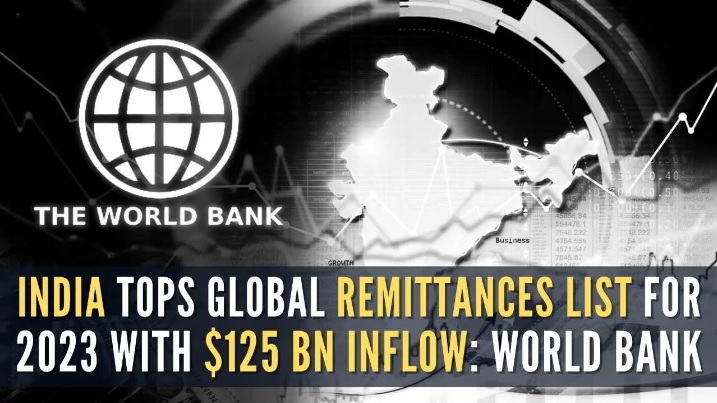
India’s diaspora powerhouse: Leading the 2023 global remittance list with a record $125 Billion
India has achieved a remarkable milestone in 2023 by leading the global remittance charts with a staggering $125 billion, as reported by the World Bank. India’s position at the top of the global remittance charts reflects the strength and impact of its global diaspora, marking their economic contribution to their home country.
This is particularly notable considering the size and spread of the Indian diaspora, which constitutes a significant workforce in various countries, especially in the United States, the United Kingdom, Singapore, and the Gulf Cooperation Council nations.
According to the World Bank’s latest Migration and Development Brief released on December 18, 2023, the total remittance flow to low- and middle-income countries (LMIC) reached approximately $669 billion in 2023. India’s share, amounting to $125 billion, registers a significant increase from the previous year’s figure of $111.22 billion. This growth elevates India’s contribution to South Asian remittances to 66% in 2023, up from 63% in 2022.
The United States, the United Kingdom, and Singapore emerge as the most significant contributors to India’s remittance inflow, collectively accounting for 36% of the total. The Gulf Cooperation Council (GCC) countries, particularly the United Arab Emirates, also play a substantial role, contributing 18% to India’s remittance inflow.
Several government initiatives have been pivotal in boosting these remittances. The linkage of India’s Unified Payments Interface (UPI) with Singapore’s payment systems and the cooperation between India and the UAE, which involves using local currencies for cross-border transactions, have significantly facilitated the flow of remittances.
India has also implemented non-residential deposit programs, attracting substantial foreign currency. As of September 2023, non-residential deposits in India amounted to $143 billion, witnessing an increase of $10 billion from the previous year, the World Bank report said.
The report indicates that remittance costs play a crucial role in these flows. South Asia, and particularly the remittance corridor between India and Malaysia, boasts the lowest remittance costs globally, standing at just 1.9%. This factor, along with strong labor markets and declining inflation in high-income source countries, has been instrumental in the surge of remittances to India.
However, the World Bank cautions about the potential risks, including the possibility of a decline in real income for migrants in 2024 due to global inflation and low growth prospects. Despite these concerns, remittances to low- and middle-income countries are expected to grow, albeit at a slower pace, in the coming years.
Most importantly, this report sheds light on the multifaceted impact of these financial inflows on the Indian economy. The significance of this phenomenon extends beyond mere monetary value; it reflects a complex interplay of global migration, economic policy, and the pivotal role of the Indian diaspora.
***


